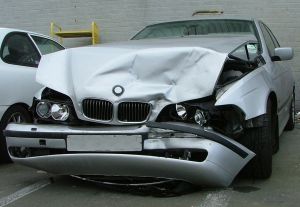 The weather can turn on a dime in the Bay Area. Last week, the cold, windy weather suddenly gave way to the sun, giving Bay Area residents an excuse for weekend getaways and barbeques Yet, an unfortunate aspect of the recently improved weather was a slew of auto accidents. Rainy weather makes driving an exercise in focus and restraint, due to the low visibility and slick roads associated with it. Meanwhile, warmer temperatures mean more people on the roads, thus increasing the chances of a crash.
The weather can turn on a dime in the Bay Area. Last week, the cold, windy weather suddenly gave way to the sun, giving Bay Area residents an excuse for weekend getaways and barbeques Yet, an unfortunate aspect of the recently improved weather was a slew of auto accidents. Rainy weather makes driving an exercise in focus and restraint, due to the low visibility and slick roads associated with it. Meanwhile, warmer temperatures mean more people on the roads, thus increasing the chances of a crash.
There were no less than four major injury accidents in San Francisco during the week of May 7 to May 14. The accidents exemplify common reasons for collisions.
Drunk Driving:
Thankfully, fatal drunk driving accidents are on the decline. According to the Center for Disease Control drunk driving fatalities declined 20% from 2006 to 2009. Even so, drunk driving is still the cause of 1 in 3 fatal crashes in the United States. The Marin Independent Journal reports that during the weekend of May 12 five accidents were attributed to driving under the influence in and around San Francisco. Earlier in the week, a drunk driver on Treasure Island struck a parked car, pushing it into two pedestrians throwing away trash into a nearby garbage receptacle. The 31 year old man suffered a cut to the back of the head and the 11 year old boy was taken to the hospital with a life threatening head injury. The car also caused minor injuries to a 9 year old boy who was getting out of the parked car at the time. As Mothers Against Drunk Driving urges drivers to remember, there are many variables that determine how alcohol impaired a person becomes with each drink, therefore the safest choice is never drink and drive.
Speeding:
According to Millbrae Patch, on May 10 a man driving a van on 101S between San Francisco and Millbrae exited the freeway into a turn. Due to his excessive speed, he lost control and crashed into a retaining wall. Moreover, the man was not wearing a seat belt and was ejected onto the roadway sustaining major injuries. Freeways and thoroughfares often give drivers a false sense of security because they tend to be wide and straight. However, speeding always reduces drivers’ control over their vehicle and may prevent them from responding in time to an unexpected danger. The National Highway Traffic and Safety Administration estimates that in 2007, speeding was involved in 31% of fatal crashes in the United States.
Turns and Intersections:
CBS Local News reported that on May 9 a PG&E truck turned left into from Van Ness onto 13th Street in San Francisco and collided with a bicyclist. The bicyclist was rushed to the hospital with life threatening injuries. On May 14, an SUV driver hit a 62 year old man at a crosswalk in North Beach and then sped off, leaving the man lying in the street. The hit and run victim was taken to the hospital with a life threatening head injury. The police are asking for help identifying the driver of the SUV. It goes without saying, that leaving the scene of an accident is one of the worst decisions a driver can make. Turns and intersections present a lot of challenges for drivers, especially in high tourist areas like North Beach. Drivers are not only looking out for other cars, but also pedestrians, bicyclists, and buses that may cross their path. Accidents at crosswalks should remind drivers to check all mirrors before turning, pedestrians to look both ways before crossing, and bicyclists to always dismount and walk through crosswalks, rather than unexpectedly veering through an intersection.
Continue Reading ›
 San Francisco Injury Lawyer Blog
San Francisco Injury Lawyer Blog













 On April 24 2012, the Senate passed
On April 24 2012, the Senate passed 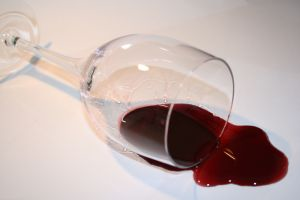 According to a report in The Sacramento Bee, Auburn Police responded to a report of a noisy party on Buckeye Court early Sunday morning. While standing outside their own vehicles at the scene, two officers ordered a driver to stop after the suspect failed to heed a stop sign. A third officer, who was in his car at the time, tried to overtake the suspect but the motorist continued to flee at a high speed. The driver sped through additional intersections, again failing to obey stop signs, until arriving at the intersection of Vista Del Monte and Perkins Way. At that location, the suspect lost control of the car which left the roadway and collided with a parked vehicle before crashing into a pillar that was part of a home on Vista Del Monte. No one in the home was injured. Police released a male passenger but arrested the car’s driver, Ross Levin, and took him into custody on suspicion of driving under the influence of alcohol.
According to a report in The Sacramento Bee, Auburn Police responded to a report of a noisy party on Buckeye Court early Sunday morning. While standing outside their own vehicles at the scene, two officers ordered a driver to stop after the suspect failed to heed a stop sign. A third officer, who was in his car at the time, tried to overtake the suspect but the motorist continued to flee at a high speed. The driver sped through additional intersections, again failing to obey stop signs, until arriving at the intersection of Vista Del Monte and Perkins Way. At that location, the suspect lost control of the car which left the roadway and collided with a parked vehicle before crashing into a pillar that was part of a home on Vista Del Monte. No one in the home was injured. Police released a male passenger but arrested the car’s driver, Ross Levin, and took him into custody on suspicion of driving under the influence of alcohol. 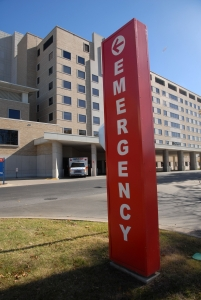 A recent report in The San Francisco Chronicle served as a particular reminder of the fact that every victim lost in a traffic fatality had his or her own story. Sena Putra, a 47 year old Oakland resident, was returning to work after lunch on Thursday. He was crossing 13th Street in the South of Market neighborhood of San Francisco when he was hit by a gasoline tanker truck as it turned onto 13th from Folsom Street. Investigators reported that Putra was crossing in a crosswalk and had a green light. Putra died at the accident scene. The driver of the truck did remain at the scene and cooperated with police. As of the time of the report, no arrest had been made.
A recent report in The San Francisco Chronicle served as a particular reminder of the fact that every victim lost in a traffic fatality had his or her own story. Sena Putra, a 47 year old Oakland resident, was returning to work after lunch on Thursday. He was crossing 13th Street in the South of Market neighborhood of San Francisco when he was hit by a gasoline tanker truck as it turned onto 13th from Folsom Street. Investigators reported that Putra was crossing in a crosswalk and had a green light. Putra died at the accident scene. The driver of the truck did remain at the scene and cooperated with police. As of the time of the report, no arrest had been made.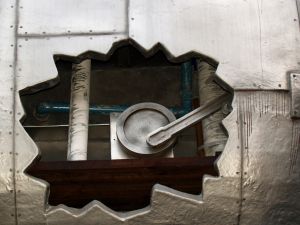 The deadly San Bruno pipeline explosion in September of 2010 drew attention to PG&E’s policies and procedures for monitoring its infrastructure and implementing strategies to protect public safety. The National Transportation Safety Board formed an
The deadly San Bruno pipeline explosion in September of 2010 drew attention to PG&E’s policies and procedures for monitoring its infrastructure and implementing strategies to protect public safety. The National Transportation Safety Board formed an  The weather can turn on a dime in the Bay Area. Last week, the cold, windy weather suddenly gave way to the sun, giving Bay Area residents an excuse for weekend getaways and barbeques Yet, an unfortunate aspect of the recently improved weather was a slew of auto accidents. Rainy weather makes driving an exercise in focus and restraint, due to the low visibility and slick roads associated with it. Meanwhile, warmer temperatures mean more people on the roads, thus increasing the chances of a crash.
The weather can turn on a dime in the Bay Area. Last week, the cold, windy weather suddenly gave way to the sun, giving Bay Area residents an excuse for weekend getaways and barbeques Yet, an unfortunate aspect of the recently improved weather was a slew of auto accidents. Rainy weather makes driving an exercise in focus and restraint, due to the low visibility and slick roads associated with it. Meanwhile, warmer temperatures mean more people on the roads, thus increasing the chances of a crash.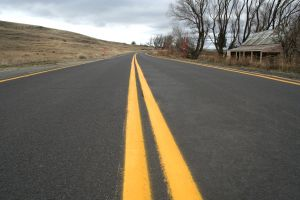 Police have not yet released a statement concerning the cause of this collision and we do not wish to speculate about the factors that contributed to this specific crash. As your
Police have not yet released a statement concerning the cause of this collision and we do not wish to speculate about the factors that contributed to this specific crash. As your 